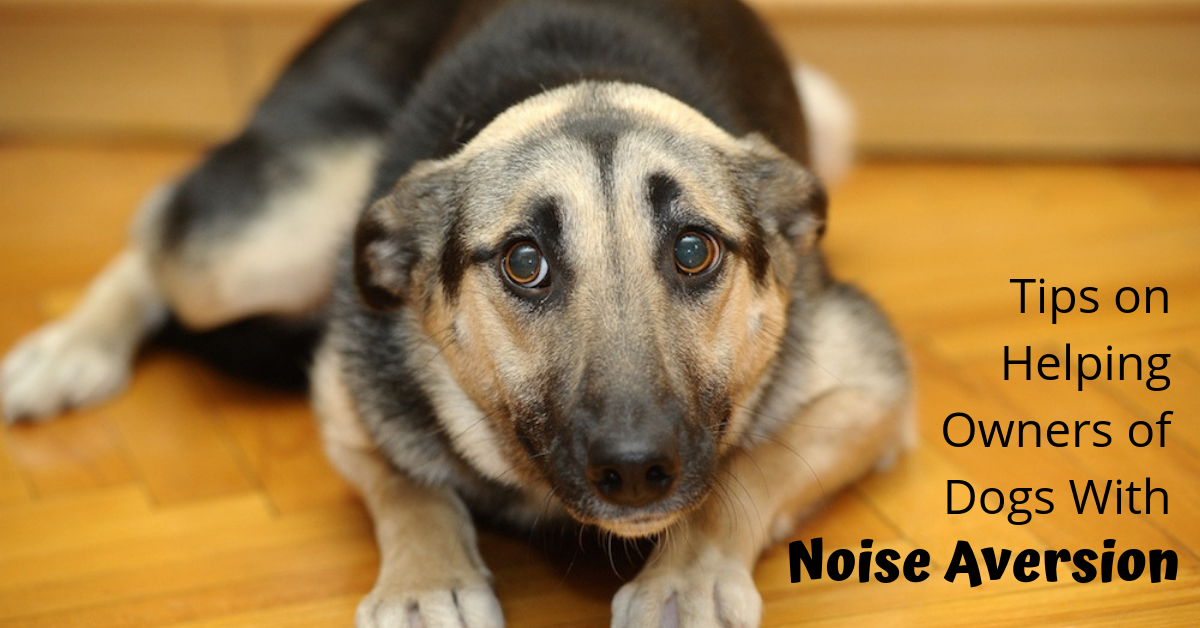 Web Content Viewer
Web Content Viewer
Tips on Helping Owners of Dogs With Noise Aversion
Published on 6/24/19

Summer may be your favorite time of year, but some dogs can't catch a break between thunderstorms and fireworks. Noise Aversion is quite common, yet it is often overlooked by pet owners or accepted as normal behavior. Unfortunately, if allowed to go unchecked, it can become a severe issue that can greatly impact the quality of life for both the dog and pet owner. Some studies indicate that nearly 50% of dogs suffer from some amount of noise aversion. It is estimated that 40% of these dogs are brought to see a veterinarian, while owners attempt to treat 20% at home and 40% go untreated. So, what can you do to help more of these pets and their owners?
-
Proactively ask clients how their dog responds to likely triggers (storms, fireworks, vacuum, etc.) of noise aversion. Don't rely on clients to remember to bring it up to you. They may not realize that their dog's behavior is out of the norm and they also may not realize that there are things they can do to help calm their pet. Zoetis has a downloadable form available for you to use to assess the presence of noise aversion in patients.
-
Use social media to create awareness and start the conversation. If your practice is active on social media, take the opportunity to educate your clients about the symptoms of noise aversion and the options available to them for prevention and treatment. We have a downloadable graphic you can share on Facebook to help get the message out to that remaining 60% of pet owners you haven't heard from yet!
-
Intervene early, before a strong pattern of behavior has been learned. Early intervention with environmental management coupled with desensitization and counter-conditioning training may help avert an escalation of the problem. White noise and pheromone therapy may be helpful in calming the dog at stressful times. A safe retreat should also always be provided, but what this looks like may be different depending upon the dog; It may be a bathtub, closet, or your lap!
-
Consider pharmacologic intervention. While some dogs may respond well to environmental management, others may need the additional help of a supplement, or even medication, to ease their anxiety. While you may not want to pull out the big medication guns right away, listen to your client and get a sense of how they are feeling about the situation so you aren't perceived as minimizing it.
-
Encourage owners of dogs with noise aversion to seek assistance from a trusted trainer or behaviorist in your area if this isn't your area of expertise. Counter-conditioning training takes a lot of patience and understanding and you may not have the time to invest in counseling your client through it. A trusted trainer or behaviorist can focus on this area more specifically with your client, giving them the best chance at success.
With the 4th of July upon us, this subject is timely, as this is a dreaded day for those who own dogs with severe noise aversion. The 5th of July is claimed to be the day of the year with the highest number of lost pets reported, including cats, dogs, and birds. It's a good time to remind your clients (again) of the importance of microchipping, as well as keeping their pet's registration current. Download our Facebook shareable graphic on July 4th safety and feel free to share it with your clients to educate them on keeping their pets safe over the coming holiday.